\`\<\!DOCTYPE html\>
\\<head\>\\\<title\>🛋️ The Deep Psychology of Furniture: Culture, Personality, and Design in Therapy (Birmingham, AL)\</title\>\\\\ \</head\>\<body\>
“`
🛋️ The Deep Psychology of Furniture: What Chairs Say About Culture, Personality, and Healing in Birmingham, AL
At **Taproot Therapy Collective** in Birmingham, AL, we believe the environment is integral to the healing process. Our selection of timeless, quality design is intentional. This article explores the link between design history and the human psyche—a core principle of the Depth Psychology we practice.
Did you enjoy this article? Check out our podcast here: [https://gettherapybirmingham.podbean.com/](https://gettherapybirmingham.podbean.com/)
)
Chair
The **psychology of furniture** in a clinical setting is subtle yet profound. You and your therapist must both sit somewhere, and we have instinctively absorbed the visual rules for this space. We know that the therapist occupies the **chair**—a position of contained authority—while the patient often finds comfort on the **couch**. The spaces we design for our offices, and the specific chairs we choose, are published in therapy directories because they are a non-verbal map of our values. The design is a powerful indicator of not only the clinician’s personality but also of their hypothesis about **style, economy, and the future of well-being**.
I have explored extensively how the physical space we inhabit affects our internal emotional world. As filmmaker Tony Zhou demonstrates in his video essay on film form, the **chair is one of the quickest tools to visually communicate character and theme** in film. This intersection of design and depth psychology fascinates me.
Architects and furniture designers share a critical task: envisioning the future. Unlike fleeting art or theatre sets, we expect buildings and furniture to endure—often lasting longer than us. Choosing enduring **styles and materials** requires an educated guess about lasting **form and function**.
The great philosophical fights in design, such as the debate between **classicism** and **modernism**, reflect competing visions for the world. Classicists trust traditional structures, asking: “**Should we do it?**” Modernists, who embrace new technologies and materials, ask: “**What can we do?**” Both schools of thought are vital for keeping design grounded, marrying aesthetic ideals with human utility.
🔮 Charles and Ray Eames: Design as Prophecy
The iconic partnership of **Charles and Ray Eames** stands out. Charles, a radical architect, and Ray, a visionary designer, were exceptional at predicting future cultural trends. The **Eames Lounge Chair**, which remains a best-seller and the chair I use daily in my practice, is a testament to their enduring insight. Its manufacturing and cultural endurance make it a modern design archetype.
Even the Eameses’ later works, which critics initially dismissed as “failures,” were actually **prophecies** about the future. They warned of the risks associated with the impending **hyper-connection of information technology**—a fragmentation that would necessitate a profound reinvention of social, political, and economic life.
)
Ray Eames’s exhibit, *”Connections: The Work of Ray Eames,”* explored the idea of interconnectedness, seeing the design process as a **network of ideas**. Similarly, Charles Eames’s final museum exhibit on Thomas Jefferson and Benjamin Franklin was revolutionary. He grouped items by **association** rather than type, encouraging visitors to engage in a non-linear, associative journey through history.
)
The design critics of the time, constrained by linear thinking, failed to grasp the Eameses’ intuitive insight. They were attempting to create a functional analogy for **hypertext**—the underlying non-linear, link-based structure of the modern internet—using physical, analog materials. Intuitives often sense profound **cultural currents and technological shifts** long before they are rationally understood. The Eameses were intuiting the nature of the interconnected world before the technology could fully realize it.
🔑 Design as a Barometer for the Psyche: Why We Choose Timelessness
Studying chairs gives us key insights into our **collective psyche**. Chairs are a necessity, used in the widest variety of settings, making them excellent barometers for style, culture, and enduring value. They tell us what a place values. The throne signifies a king; the simple, solid wood chair a commitment to utility and honesty. This symbolism is immediate and universal.
At **Taproot Therapy Collective** in Birmingham, AL, our office design is a conscious part of our **therapeutic methodology**. We sought a style that communicated ideological roots in both **cutting-edge neuroscience** and the **holistic, ancient wisdom of Depth Psychology**. Our aesthetic concept was famously described as **Gandalf’s wizard study meets an Apple store**.
For our website, the inspiration blended Frank Lloyd Wright’s masterpiece of organic architecture, Fallingwater, with the natural, elemental quality of a Southwest yurt. This balance communicates that the care we offer honors both the rational and the intuitive parts of the self.
While clients may not consciously articulate the difference, they **feel** it. They feel the weight of quality furniture, the texture of real wood grain, and the uniqueness of a well-chosen piece over disposable, mass-market items. As philosopher **Robert Pogue Harrison** notes, our environment is not merely functional; it reflects and shapes our sense of **well-being** and identity. This is why every office at Taproot is intentionally different, tailored to the personality and therapeutic perspective of each clinician.
Our commitment to sourcing quality furniture—often refinishing antiques like the **Niels Moller Model 71 chairs** in our Neurostim room—is a rejection of **planned obsolescence**. Things we love need work; things with no value are easily discarded. When furniture is designed to be timeless and repairable, it stands as a subtle metaphor for the therapeutic journey itself: **growth and healing take work, but the result is lasting and worth the effort.**
To live in a world of disposable goods affects our mental health. Good design is timeless because it points to **timeless elements and forms in the human psyche**. Changing your life starts with changing your environment, and vice versa. **If you want to change your life, start by changing your chair.**
📋 Designer Cheat Sheet: Key Mid-Century Modern Design Styles
Mid-century modern design is not a single look, but a collection of movements unified by an emphasis on **authenticity, function, and enduring form**:
- **🎨 Bauhaus:** Emphasized the fusion of **art, craft, and technology**. Characterized by clean lines, geometric forms, and innovative use of materials like tubular steel. (*Designers: Mies van der Rohe, Marcel Breuer*)
- **🇩🇰 Danish Modern:** Known for **high craftsmanship and simplicity**. Featured organic, sculptural shapes, and high-quality woods (teak, rosewood). (*Designers: Hans Wegner, Arne Jacobsen*)
- **🇸🇪 Scandinavian Design:** A broader Nordic style emphasizing **minimalism, functionality, and natural light woods** (birch, pine).
- **🔨 Arts and Crafts:** A revolt against industrialization, seeking to revive **traditional, honest craftsmanship** and the beauty of exposed joinery and solid wood construction. (*Designer: Gustav Stickley*)
- **🌿 Organic Design:** Sought to bring **nature-inspired forms** and flowing lines into furniture, often utilizing molded plywood and fiberglass to achieve a natural, body-conforming shape. (*Designers: Charles and Ray Eames*)
🧑🎨 Key Figures: Major Mid-Century Modern Furniture Designers
- **Hans Wegner:** The “**grandfather of chairs**,” known for ergonomic designs that perfectly balanced aesthetics and support, showcasing masterful wood joinery.
- **Arne Jacobsen:** Celebrated for minimalist, distinct forms, including the iconic *Egg Chair* and *Swan Chair*.
- **Eero Aarnio:** Known for innovative use of plastic and fiberglass in the 1960s, creating pieces like the *Ball Chair*.
- **Eero Saarinen:** A master of varied styles, renowned for the “**Womb**” chair and the **Tulip** or Pedestal group.
- **Eileen Gray:** A multifaceted artist whose independent spirit led to iconic works like the *Bibendum Chair*.
- **George Nelson:** A founding father of American Modernism, known for designs like the *Nelson Bench* and *Marshmallow Sofa*.
- **Isamu Noguchi:** A sculptor known for his flowing forms, reflected in the iconic *Noguchi Table*.
Did you enjoy this article? Checkout the podcast here: [https://gettherapybirmingham.podbean.com/](https://gettherapybirmingham.podbean.com/)
[https://youtu.be/1mrgXSVKaT0](https://youtu.be/1mrgXSVKaT0)
📚 References and Further Reading
References: Depth Psychology, Design Theory, and Architecture
- Zhou, T. (2014). How to read a film: Chairs. Every Frame a Painting. [https://www.youtube.com/watch?v=5v5eBf2KwF8](https://www.youtube.com/watch?v=5v5eBf2KwF8)
- Eames, C., & Eames, R. (1976). Connections: The Work of Charles and Ray Eames. Metropolitan Museum of Art.
- Rybczynski, W. (2016). Now I Sit Me Down: From Klismos to Plastic Chair: A Natural History. Farrar, Straus and Giroux.
- Fiell, C., & Fiell, P. (2017). 1000 Chairs. Taschen.
- Massey, A. (2011). Chair: 500 Designs That Matter. Phaidon Press.
- Miller, J. (2009). Chairs: A History. Harry N. Abrams.
- Cranz, G. (2000). The Chair: Rethinking Culture, Body, and Design. W. W. Norton & Company.
- Harrison, R. P. (2009). Gardens: An Essay on the Human Condition. University of Chicago Press.
- Arendt, H. (1958). The Human Condition. University of Chicago Press.
- Nash, J. F. (1950). Equilibrium Points in N-Person Games. Proceedings of the National Academy of Sciences, 36(1), 48-49.
- Saunders, F. S. (2000). The Cultural Cold War: The CIA and the World of Arts and Letters. The New Press.
- Wilk, C. (2006). Modernism: Designing a New World 1914-1939. V&A Publications.
- Raizman, D. (2010). History of Modern Design. Laurence King Publishing.
- Marcus, G. H. (2005). Masters of Modern Design: A Critical Assessment. The Monacelli Press.
- Habegger, J. (2005). Sourcebook of Modern Furniture. W. W. Norton & Company.
Further Reading: The Psychology of Design and Architecture
- Marymount University. (n.d.). Designing for Well-Being: The Role of Interior Architecture in Mental Health. [https://marymount.edu/blog/designing-for-well-being-the-role-of-interior-architecture-in-mental-health/](https://marymount.edu/blog/designing-for-well-being-the-role-of-interior-architecture-in-mental-health/)
- Augustin, S. (2009). Place Advantage: Applied Psychology for Interior Architecture. Wiley.
- Bohm-Duchen, M. (2001). The Private Life of a Masterpiece. University of California Press.
- Caan, S. (2011). Rethinking Design and Interiors: Human Beings in the Built Environment. Laurence King Publishing.
- Gura, J. (2007). Scandinavian Furniture: A Sourcebook of Classic Designs for the 21st Century. Thames & Hudson.
- Hayward, H., & Kirkham, P. (1980). Charles and Ray Eames: Designers of the Twentieth Century. MIT Press.
- Heller, S., & Vienne, V. (2003). Citizen Designer: Perspectives on Design Responsibility. Allworth Press.
- Heskett, J. (2005). Design: A Very Short Introduction. Oxford University Press.
- Meadmore, C. (2003). The Modern Chair: Classic Designs by Thonet, Breuer, Le Corbusier, Eames and Others. Dover Publications.
- Norman, D. A. (2013). The Design of Everyday Things: Revised and Expanded Edition. Basic Books.
- Olson, R. J. M. (2000). Italian Renaissance Sculpture. Thames & Hudson.
- Pile, J., & Gura, J. (2014). A History of Interior Design. Wiley.
- Ramljak, S. (2018). Crafting Modernism: Midcentury American Art and Design. Abrams.
- Sparke, P. (2020). Design in the 20th Century: A Cultural History. Bloomsbury Visual Arts.
- Sudjic, D. (2009). The Language of Things: Understanding the World of Desirable Objects. W. W. Norton & Company.
Read More Depth Psychology Articles
- Taproot Therapy Collective Podcast
- How Psychotherapy Lost its Way
- Science and Mysticism
- Therapy, Mysticism and Spirituality
- The Unconscious as a Game
- How to Understand Carl Jung
- How to Use Jungian Psychology for Screenwriting and Writing Fiction
- How the Shadow Shows up in Dreams
- How to read The Red Book
- The Dreamtime
- Using Jungian Thought to Combat Addiction
- Healing the Modern Soul
- Jungian Exercises from Greek Myth
- Jungian Shadow Work Meditation
- The Shadow in Relationships
- Free Shadow Work Group Exercise
- Post Post-Moderninsm and Post Secular Sacred
- Mysticism and Epilepsy
\


)
)
)
…-141x150.png)
)
)
) This is my favorite chair
This is my favorite chair)
)
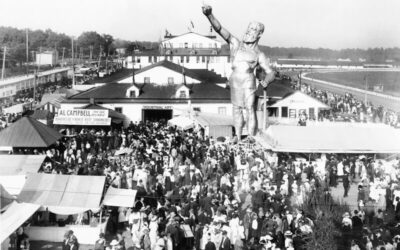

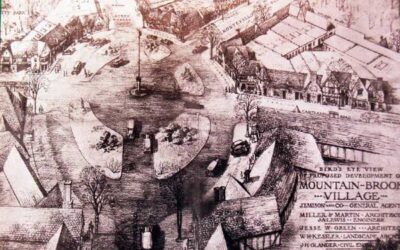



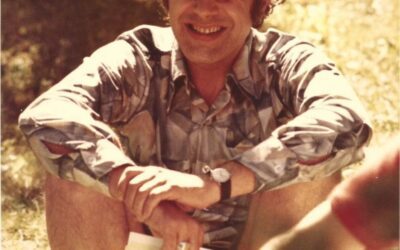






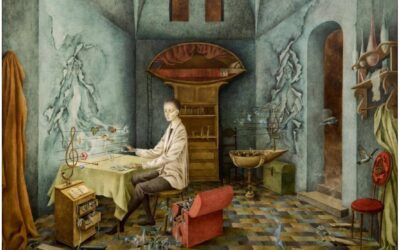






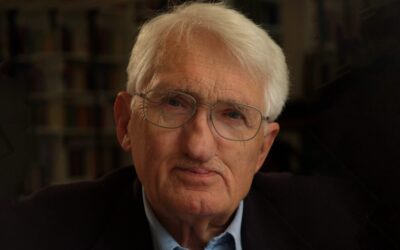

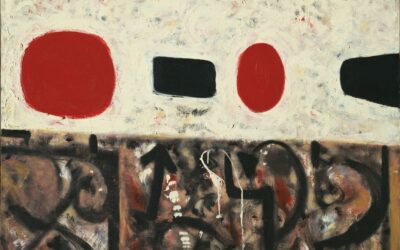
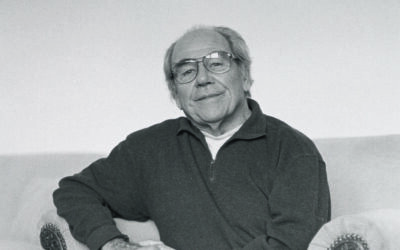
Hello
I need to